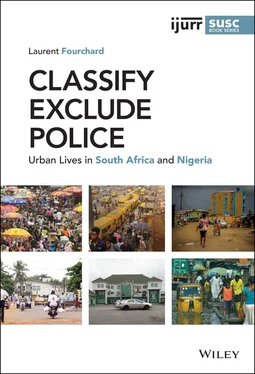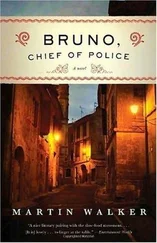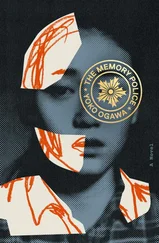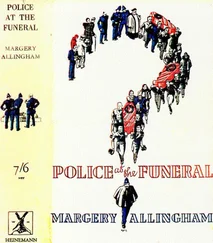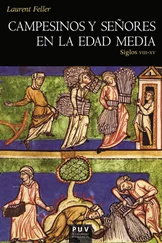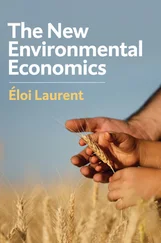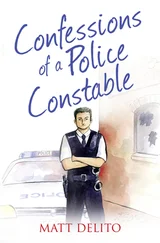The historical invention of these categories is at the heart of the processes of exclusion and the reification of differences between natives and non‐natives, and between urbans and temporary migrants, which had enduring legacy in post‐colonial and post‐apartheid periods. In the 1930s, further categories were added in both countries to define and classify urban youth as delinquents, children in need of care and minor girls in need of protection. When South African social workers and their British imperial counterparts in Nigeria embarked on a mission to have boys released from prison and protect girls from the dangers of street life, they set up social services that criminalised the presence of these young people on the streets. In Lagos, they sent the boys to the countryside, and prohibited minor girls from street trading. Girls were regularly rounded up, forced to undergo gynaecological examinations, and confined to hotels in the company of prostitutes, thereby arousing the indignation of their parents. The notion of delinquency as a form of criminal behaviour came into being during this period, but it is difficult to ascertain whether it applied to street children, girl street vendors, occasional thieves or hardened criminals. A similar ambiguity surrounds contemporary local expressions ( tsotsis or skollies in South Africa, boma boys or jaguda boys in Nigeria) used to describe groups of boys engaged in activities on the borderline between legality and illegality, ranging from shoplifters and groups of neighbourhood mates to hierarchically organised gangs.
These examples attest to the new mode of governing populations introduced during the colonial period. Migrants, non‐natives, delinquents, children in need of care, minor girls and single women became administrative categories that had little in common other than being part of a nomenclature designed to rule by classification – a process that paralleled the invention and reification of ethnic groups in the countryside. 6 Indeed, the new categories constituted more than just an administrative taxonomy: they were also associated with rights (regarding work, access to housing or place of residence), punishments (prison, deportation, fines, flogging) and prohibition (from circulating freely, engaging in trade, working, living alone or with a family). The individuals concerned used these categories to define and describe themselves as well as to describe, stigmatise and exclude other groups they considered their opponents. As a result, these categories left a deep imprint on the collective imagination long after such social engineering was abandoned.
In the 1930s, new security apparatuses were also developed by non‐state actors at the neighbourhood level. After identifying the most obvious threats, local organisations in South Africa and Nigeria introduced schemes for policing everyday life in low‐income districts. These actors were given substantial power for the reason that the authorities had neither the resources nor a compelling need to ensure a police presence in areas that played a minimal role in the colonial economy. Such organisations acquired considerable operational autonomy and, in some respects, actually governed the neighbourhood, especially at night. They were free to use undue violence against unruly youths or ‘foreigners’ whose access to the neighbourhood was regulated after certain hours. By drawing the boundaries between insiders to be integrated and outsiders, they built a political community at the neighbourhood level.
These organisations or their successors still operate in the two countries today, but their modus operandi has been partly transformed. The violence is perhaps better regulated nowadays; corporal punishment no longer enjoys the same legitimacy, and it has become more discreet or rare but it has not disappeared. Neighbourhood policing organisations have become more bureaucratised, politicised and, in some cases, feminised. They now charge low rates for their services, rather than performing them for free. But, as in the colonial period, policing still consists in identifying specific threats to neighbourhood cohesion and controlling target populations.
Finally, other apparatuses are used at the micro level of bureaucratic and political spaces (local government offices, the residence of a political boss) and public spaces (the street, bus stations, markets). Access to these places is constantly being challenged and brokered between individuals in positions of authority (civil servants, trade union leaders, godfathers, governors) and subordinate actors (street vendors, bus drivers, unemployed workers, students) seeking a service, an authorisation, a document, a stall in a market or a place at university. Observing the myriad negotiations between street‐level bureaucrats, private agents working on behalf of the state and economic players whose livelihoods depend on the street provides an up‐to‐date picture of the opportunities for inclusion in a clientelistic network or in a local political community as well as the forms of discrimination at play in granting access to a service, a job or a space for trading. Above all, these negotiations reveal a whole range of diverse practices. For a street vendor, the process may involve bargaining for a reduction in the amount to be paid to a municipal tax collector; for a student, complying with what local government agents present as the rules for obtaining a certificate and finding a job or a place at university; for a tax collector at a bus station, being paid by the road transport union to intimidate or attack bus drivers who refuse to yield to union authority; for an unemployed unskilled worker, to benefit from the largess of a godfather, including food, in exchange for intimidating his political opponents if need be during electoral periods.
By exploring these varied apparatuses, we can measure the effects of classifying populations in terms of exclusion and inclusion, the violence they sometimes engendered, and the forms of social differentiation they brought about. For example, one might examine how state agents identified and analysed different (or similar) problems in Kano, Lagos, Cape Town and Johannesburg and how this process led to policies that simultaneously altered the limits of the state, claimed to govern conduct and produced social differentiation; or we might look at why the relationships between political bosses and their clients in Ibadan and Lagos, which for many years were quite similar, began moving in different directions in recent times, conditioning the violent (or non‐violent) nature of mobilisations, state intervention and the integration of city dwellers in political networks; or we might question why the everyday work of patrolling neighbourhoods, which appeared to be identical in Ibadan and Cape Town, has had radically different effects on the construction of community boundaries within these cities, on the use of coercion, and on what these practices tell us about the nature of a state that outsources its security functions in this way.
This book does not tell the story of how most of the population was denied political rights – the foundation of apartheid and colonial and military regimes – nor of the inequalities and the enrichment of a racial or political minority at the expense of the majority, or of repression and attempts by the police or the army to subject citizens. Instead, bearing in mind this historical matrix, it invites us to step away from the national frameworks to study the myriad of urban arrangements used to manufacture exclusion. By articulating insights across the various local, national, imperial and global levels, and the colonial, apartheid and contemporary periods, it will bring to the fore the everyday practices of power and a genealogy of different forms of classification, exclusion and policing. By focusing on power relationships in daily life and understanding objects that extend across the twentieth century into the twenty‐first, I am seeking to open up a dialogue including equal parts of history, political sociology and comparative urban studies. I am seeking to account for the chaotic historical formation of the state – which could not be reduced to its fragile or weak dimensions – and an unforeseeable changing urban social reality that cannot be adequately explained by planning nor by informality. Essential components of the repertory of public actions such as providing security, attempting to monopolising violence, and producing or reproducing social, racial or generational differences are not restricted to state agents but carried out by numerous social groups that change their concrete implementation, often in very accidental ways.
Читать дальше
